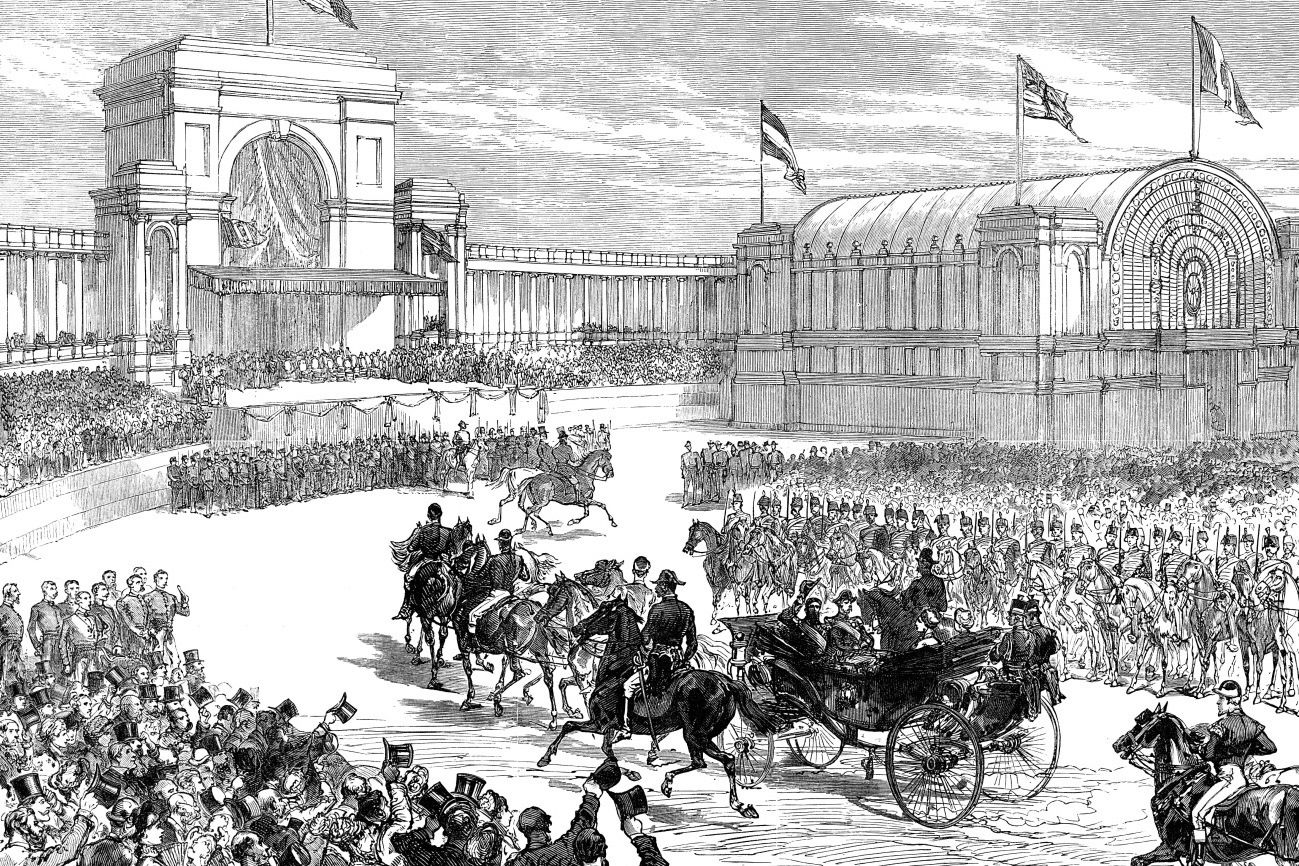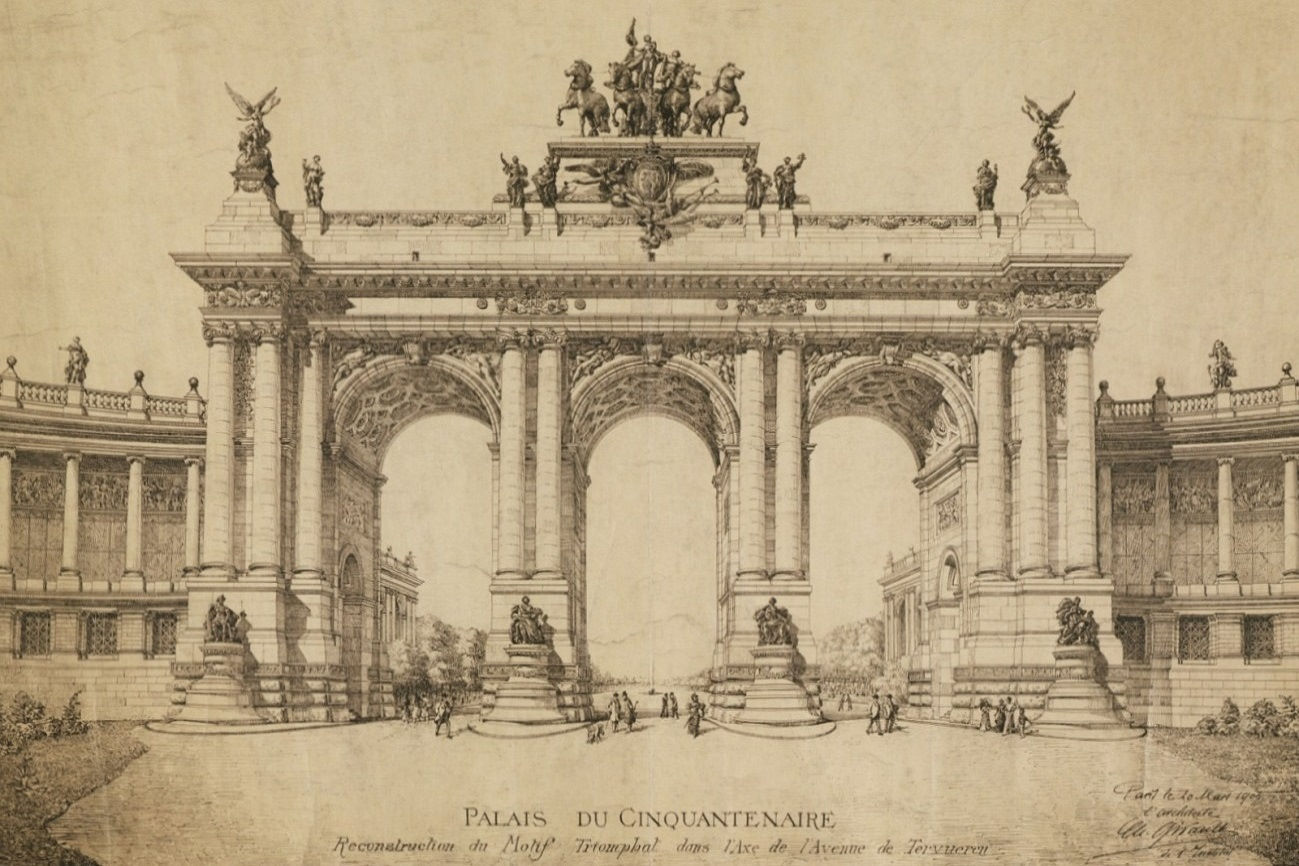For the commemoration of the fiftieth anniversary of the independence of Belgium, the architect Gédéon Bordiau traced the lines of the park on the plain of Linthout, former land of the Civic Guard who used it for manoeuvres, and erected two large exhibition halls connected by a long hemispherical gallery bisected at its centre by a monumental arcade. Unfortunately it was not completed by 1880 for the inauguration of the great National Exhibition dedicated to commerce and industry. As a temporary measure to give it an air of completion, the upper parts of the gallery and the arch were hurriedly constructed of wood and stucco.
Flushed with the success of this first exhibition, events followed one after another and major international exhibitions took place in 1888, 1897 and 1905. It was in 1888 that the site adopted the name of Parc and Palais du Cinquantenaire.



